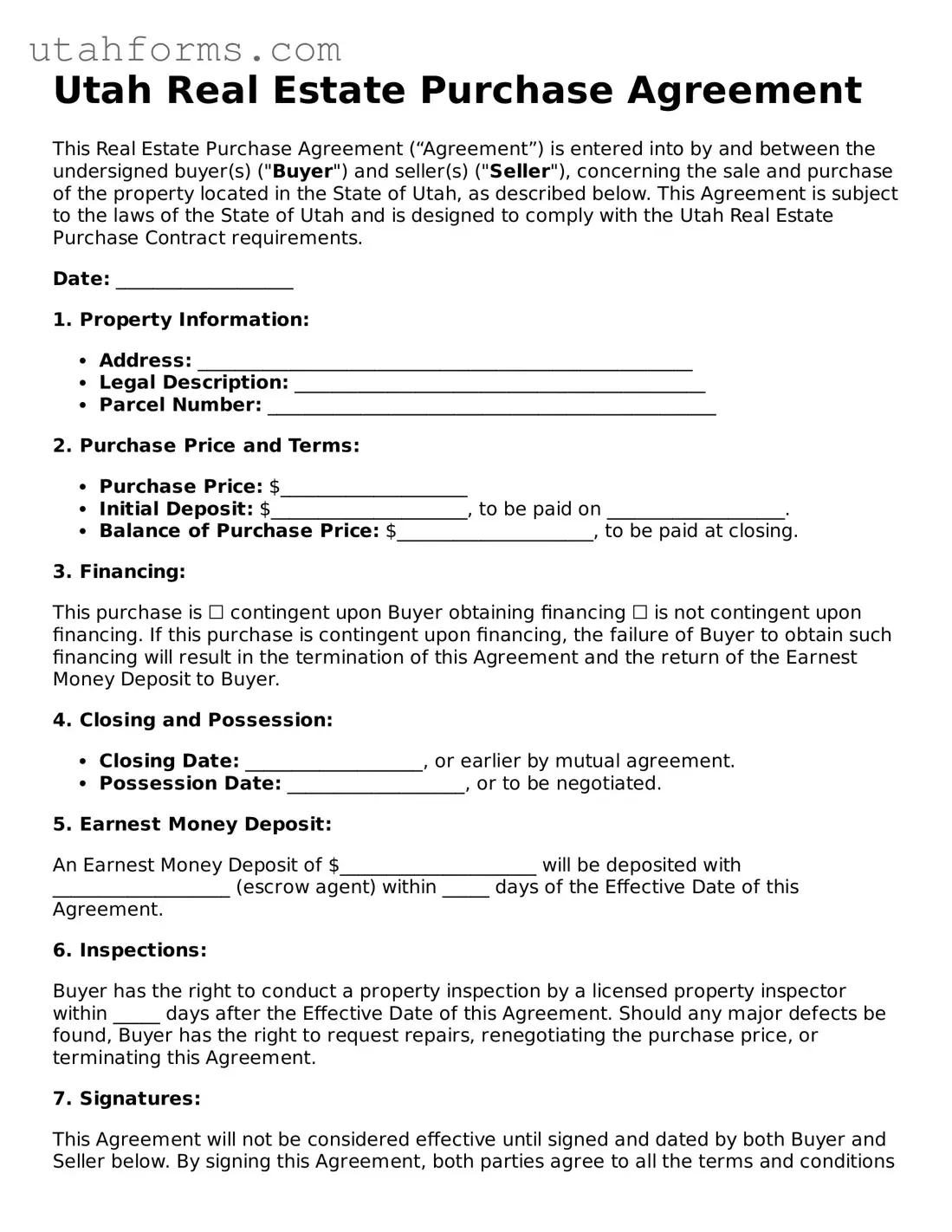Utah Real Estate Purchase Agreement
This Real Estate Purchase Agreement (“Agreement”) is entered into by and between the undersigned buyer(s) ("Buyer") and seller(s) ("Seller"), concerning the sale and purchase of the property located in the State of Utah, as described below. This Agreement is subject to the laws of the State of Utah and is designed to comply with the Utah Real Estate Purchase Contract requirements.
Date: ___________________
1. Property Information:
- Address: _____________________________________________________
- Legal Description: ____________________________________________
- Parcel Number: ________________________________________________
2. Purchase Price and Terms:
- Purchase Price: $____________________
- Initial Deposit: $_____________________, to be paid on ___________________.
- Balance of Purchase Price: $_____________________, to be paid at closing.
3. Financing:
This purchase is ☐ contingent upon Buyer obtaining financing ☐ is not contingent upon financing. If this purchase is contingent upon financing, the failure of Buyer to obtain such financing will result in the termination of this Agreement and the return of the Earnest Money Deposit to Buyer.
4. Closing and Possession:
- Closing Date: ___________________, or earlier by mutual agreement.
- Possession Date: ___________________, or to be negotiated.
5. Earnest Money Deposit:
An Earnest Money Deposit of $_____________________ will be deposited with ___________________ (escrow agent) within _____ days of the Effective Date of this Agreement.
6. Inspections:
Buyer has the right to conduct a property inspection by a licensed property inspector within _____ days after the Effective Date of this Agreement. Should any major defects be found, Buyer has the right to request repairs, renegotiating the purchase price, or terminating this Agreement.
7. Signatures:
This Agreement will not be considered effective until signed and dated by both Buyer and Seller below. By signing this Agreement, both parties agree to all the terms and conditions described herein.
Buyer's Signature: ___________________________
Date: ___________________
Seller's Signature: ___________________________
Date: ___________________
